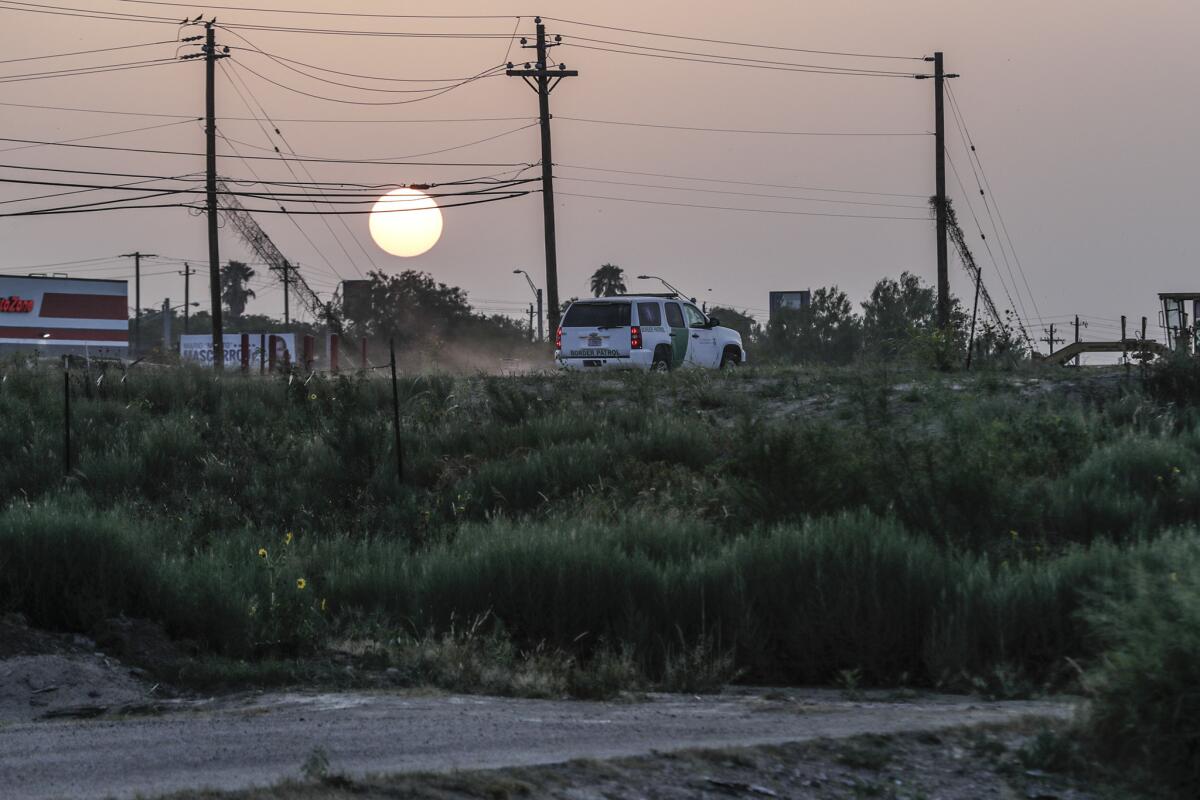They call it the <i>canicula</i>. In this Texas border town, the peak of a deadly summer is surrounded by superstitions

- Share via
Reporting from Roma, Texas — This week marks the end of the dog days of summer, the 40 hottest days of the year known along the south Texas border as the canicula.
Canicula is Latin for “dog star,” a reference to the Canis Major constellation that appears above the sun during the hottest days of the year.
Even before it started, the term was on residents’ minds, in part because of the host of superstitions that surround it: Children should be kept inside during canicula season. It’s not good to make big decisions, like getting an operation, during the canicula. If the canicula starts with rain, the summer will be mild. If it starts out hot and dry, as it did this year, beware.
Temperatures rose to the triple digits last month in every city across the Rio Grande Valley. The canicula was on the lips of waitresses, Rosary Society ladies and even priests, some of whom mentioned it last week during their homilies. Father Pablo Wilhelm reminded those about to leave the air-conditioned comfort of Our Lady of Refuge Roman Catholic Church that salvation — at least, the earthly variety — was only weeks away.
Customs agents who spent the summer baking on the border, processing immigrant families from Central America, can tell you when the canicula ends. So can Border Patrol agents charged with chasing migrants through miles of overgrown ranch land. And so can the immigrants themselves. Heat here does more than wither cotton crops and fray nerves — it kills.
Noel Benavides, 75, a Roma native and owner of the J.C. Ramirez western wear store, remembers seeing a migrant treated for heat exhaustion at the old hospital in the city plaza in 1959. The town doctor filled a tub with ice to bring the man’s temperature down. He died anyway.
Now migrants cross the Rio Grande in numbers greater than on any other stretch of the U.S.-Mexico border. So far this fiscal year, 127,778 have been caught in the Rio Grande Valley.
“They don’t realize how hot it gets. They’re not used to that,” Benavides said.
Border Patrol agents trained as paramedics linger near the riverbank, their green uniforms soaked with sweat. When they detain border crossers, the agents often pause by their vans to hand out cold water before spiriting them away to detention.
From October through the end of June, heat-related deaths on the southern border, the main cause of migrant fatalities, had risen to 48, up from 31 during the same period last year. Agents especially worried about migrants smuggled across the border in tractor trailers, like the one caught in San Antonio last July containing 31 people and eight bodies (two later died at a hospital).
On July 31 alone, agents responded to three 911 calls, rescuing five immigrants lost on massive ranches a hundred miles northeast of Roma after they were abandoned by smugglers trying to skirt a Border Patrol checkpoint. Later that day, agents patrolling west of Roma found a Honduran mother and son also abandoned by smugglers. The woman began to vomit because of the heat, became unresponsive and had to be hospitalized. By evening, an agent about 55 miles east had discovered the body of an immigrant man in the brush.
From October to the end of July, the Border Patrol in the Rio Grande Valley had reported more than 1,300 immigrant rescues and 80 deaths. And the canicula wasn’t done yet.
Agents found 18 migrants packed in a box truck, 16 abandoned in a rural shack and 42 family members on foot — all on one day, Aug. 12. The next day, a Border Patrol paramedic stopped a Mexican woman who had crossed the border illegally and was wandering 50 miles east of Roma. She had a temperature of 105 degrees. Last week, agents found at least four dead immigrants in the Rio Grande Valley, one on the riverbank.

The heat isn’t guaranteed to end with the canicula this week, but one can hope. A rainstorm this month encouraged the palm and mesquite trees as well as spirits in Roma. The high school football team and marching band started practicing weeks ago, limited by the heat to early mornings. School starts Aug. 27, filling the streets with parents’ cars and buses that ferry Mexican students daily across the border bridge from Miguel Aleman, Mexico, to attend school legally in Roma.
At J.C. Ramirez, racks filled with back-to-school uniforms, but Benavides kept a cooling towel handy.
Even if the heat wave officially ends Thursday, he explained, some believe a weeklong mini-canicula could follow. He pointed outside to a field of parched buffelgrass, a choice cattle snack, bleached yellow as straw.
“There’s something brewing,” insisted his wife, Cecilia Benavides, 75.
Storms could bring another Texas extreme: Last Aug. 26, Hurricane Harvey struck Texas, dumping more than 60 inches of rain in places and killing 68 people. Hurricanes have been known to strike along the border too. Benavides remembers when Hurricane Beulah made landfall near the mouth of the Rio Grande in 1967, killing 59 people and causing more than $200 million in damage.
But he believed an extended canicula was more likely than a hurricane.
“Have you looked at the forecast?” he said, shaking his head as the family discussed the long-term implications of climate change for the region.
The high in Roma was 105 degrees Monday. It was not expected to dip below triple digits all week.
More to Read
Sign up for Essential California
The most important California stories and recommendations in your inbox every morning.
You may occasionally receive promotional content from the Los Angeles Times.











